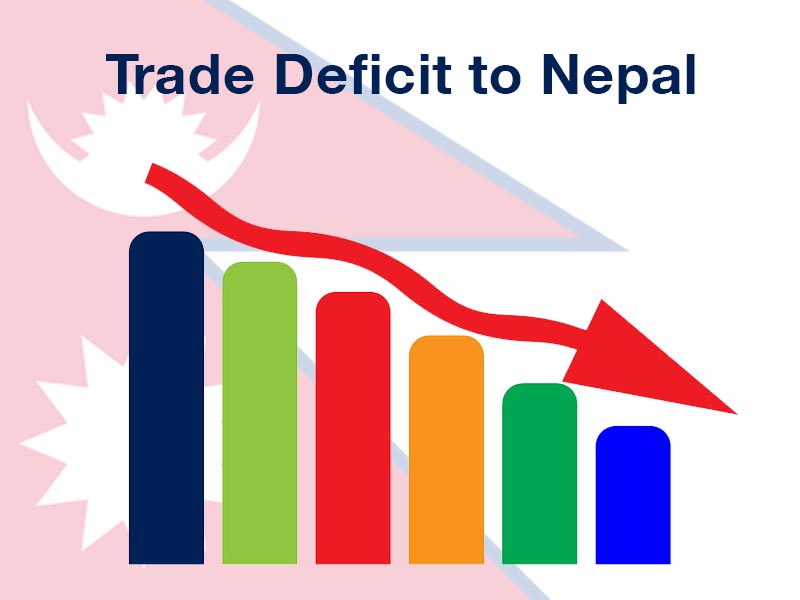Friday 26th July 2024

Nepal announced a reduced trade deficit, down by NPR 307 billion (12.02 percent Year-on-Year) in the first quarter of the current fiscal 2019-20.
According to the Customs Department’s latest Foreign Trade Statistics, Nepal’s export earnings from mid-July to mid-October increased by 14.41 percent to NPR 27.16 billion compared to the same period, last year.
In the same period, Nepal spent NPR 334.9 billion on imports, registering a reduction by 10.34 percent.
Nepal has projected a decline in imports and increase in import earnings for the third successive month in the current fiscal. The overall trade volume also reduced to NPR 362.11 billion from NPR 397.33 billion during the same period last year.
According to trade analysts, the decreased trade deficit is attributed to the government’s policy to reduce imports, decrease trade, increase in palm oil exports and a long-lasting monsoon.
“The country has been witnessing a gradual decline in imports after the government jacked up import duties on luxurious goods including vehicles and imposed restrictions on some products,” said economist Gyanendra Adhikari.
As part of its efforts, the Nepal Government doubled the excise duty on automobile imports and increased the down payment on automobile loans by 50 percent of the vehicle value.
“The data paints a rosy picture of a rise in exports, but the figures have risen mainly because traders have been importing crude palm oil and refining it for export to India. The seasonal export of cardamom has also pushed up the numbers ,” Adhikari further said.
During the review period, Nepal export palm oil worth NPR 5.7 billion compared to shipments worth NPR 374 million last year.
Cardamom exports increased to NPR 707 million from NPR 687 million in the previous year.
On the other hand, Nepal has witnessed a decrease in the import of commodities such as ginger, iron wire, non-alloy steel, scarves, shawls, textile floor coverings and woolen carpets.
Adhikari says that Nepal’s imports shrunk due to the fall in trade volume on account of high interest rates on overdraft loans and a prolonged monsoon.
Fat and milk-based oil imports have also declined drastically due to import restrictions and fuel imports have fallen by NPR 7.52 billion compared to last year.
Nepal has also held a series of trade talks with neighboring countries such as Bangladesh, Bhutan, India and China, resulting in a reduced trade imbalance.
“This has also enabled the exporters to benefit from the simplification in the transit operations and eased the customs procedures in these countries,” said Dhakal.
The government had also increased the export incentives on Nepal’s major exportable items to 3-5 percent from 1-2 percent from December 2018.
According to the Industry, Commerce and Supplies Ministry , the government provides export incentives to the goods having at least 50 percent value addition inside Nepal.
Dhaka cites factors such government’s revision in the rate of export incentives, simplification of the banking procedures to receive the incentives and extension in the basket of exportable goods for the incentives for a decreased trade deficit in Nepal.